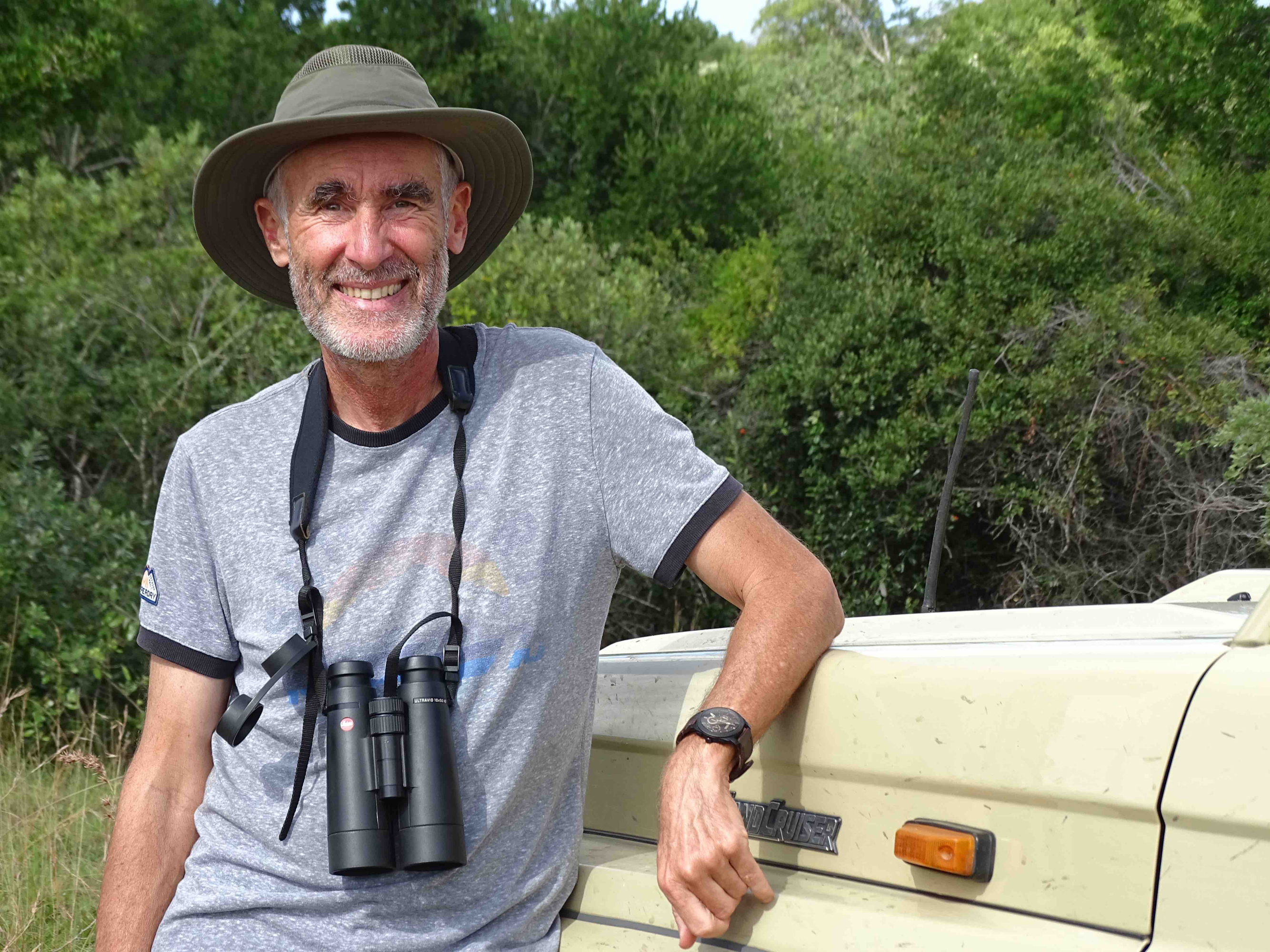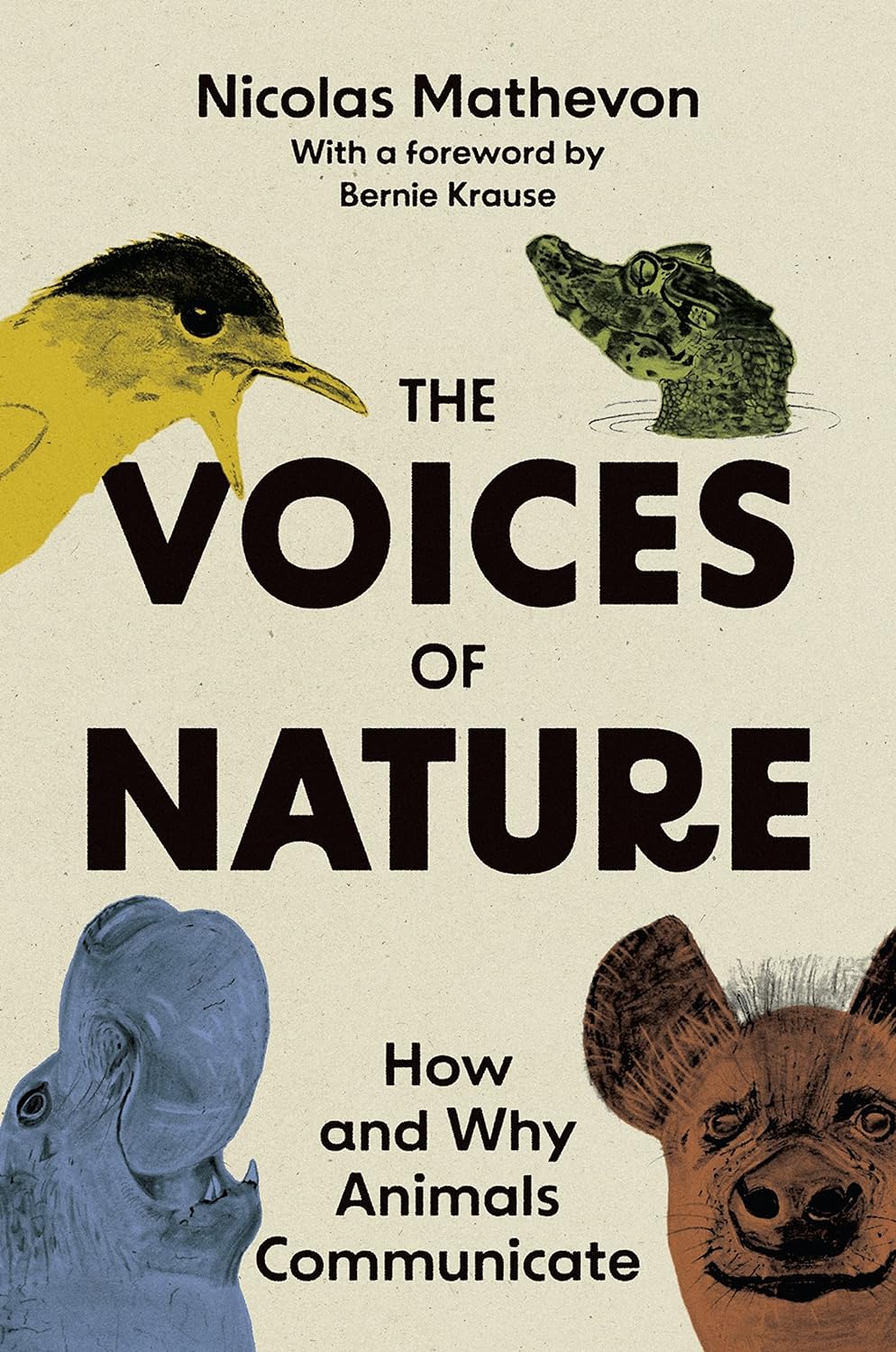Exploring animal communication: An interview with Nicolas Mathevon#
In this interview, Nicolas Mathevon discusses his book ‘The Voices of Nature’ and uncovers the fascinating world of how and why animals communicate.
About Nicolas Mathevon#
Nicholas Mathevon MAE is a Distinguished Professor of Neurosciences and Animal Behaviour at the University of Saint-Etienne in France. He is a senior member of the Institut Universitaire de France and was elected into Academia Europaea as a Member of the Ecology and Evolution section in 2022. Professor Mathevon has served as President of the International Bioacoustics Society
in France. He is a senior member of the Institut Universitaire de France and was elected into Academia Europaea as a Member of the Ecology and Evolution section in 2022. Professor Mathevon has served as President of the International Bioacoustics Society .
.
Professor Mathevon’s latest book The Voices of Nature: How and Why Animals Communicate was published by Princeton University Press in 2023. The book has been awarded several prestigious award including the 2024 R.R. Hawkins Award, the top prize among the Association of American Publisher’s (AAP) PROSE Awards, as well as the PROSE Award for excellence in biological and life sciences.
Read the interview#
Congratulations on the release of The Voices of Nature. Could you share with us what inspired you to write this book, and what initially drew you to the topics of animal behaviour and bioacoustics?
“Bioacoustics, the study of animal acoustic communication, is a rapidly expanding field. I’ve been conducting research in this field for some thirty years. Having worked with a wide variety of animals, both in the wild and in the laboratory, I felt it was important to share my knowledge with readers, the general public and scientists alike. The aim of bioacoustics is to understand how animals produce and hear sound, and what information they exchange through their sound signals. Studying the diversity of animal acoustic communications provides a better understanding of the animal world. Bioacousticians are a bit like Champollion, the Frenchman who deciphered Egyptian hieroglyphics, except that they decipher animal “languages”.”
Your book delves into the complexities of animal vocalisations. What do you think is the most surprising finding you’ve encountered in your research?
“One of the most surprising results was the discovery that baby crocodiles signal that they are about to hatch by emitting vocalisations. Their hatching calls synchronise the hatching of the whole clutch, prompting the parent to dig out the nest to help the hatchlings emerge. It was quite something to do playback experiments with these animals.”
In the book you describe a wide range of animal soundscapes, from the Amazon jungle to the Arctic. Which environment did you find the most challenging or fascinating to study, and why?
“The most difficult environment I worked in was undoubtedly the Arctic, when we carried out experiments with walruses. We had to find females with their young, when the pack ice had not yet completely melted. We sailed in a small boat through huge blocks of ice. Once we’d found a female walrus, we had to record her calf’s voice and then emit its call from a loudspeaker to test whether the mother recognised it.”
The concept of bioacoustics is central to your work. Could you explain how bioacoustics helps us understand animal communication and its importance in the field of animal behaviour?
“Bioacoustics seeks to understand how animals communicate through sound. It is therefore interested in the social interactions between individuals, which are obviously an important facet of their behavior. Spotted hyenas, for example, have a vocal repertoire of around twenty calls. When we studied one of them, the famous giggle, we showed that it carried not only the identity of the individual, but also information about its hierarchical rank. Vocalisations let individuals know who’s who in the group, who’s best to ally with, who’s in a good mood today, who’s best to avoid, and so on. Mastering acoustic communication is essential for navigating their social system. We know a lot about this with our human language, don’t we?”
How do you envision the role of bioacoustics evolving in the next decade, particularly in relation to conservation efforts and understanding biodiversity?
“Bioacoustics is already playing a key role in conservation and understanding biodiversity. It is now becoming very common to install recorders to analyse soundscapes and derive information about animal species richness. For example, we have a research programme in Mozambique where we use a dozen recorders to monitor the dynamics of biodiversity over the course of the year in different biotopes – lakes, marshes, savannahs and forests. It’s very interesting because it’s not invasive and the sound recordings are rich in information.”
The Voices of Nature has received several awards. How important was it for you to write a book that is accessible to the general reader, and what do you hope they will gain from it?
“I consider it absolutely fundamental that researchers explain to everyone what they’re doing and what they’re finding. We are paid by the taxpayer to carry out research, and we have a duty to pass on our knowledge. People are interested in science, and in today’s world, where irrationality unfortunately plays an increasingly important role, we scientists have a responsibility to explain, to demonstrate, to prove that a rational approach to what surrounds us leads to knowledge and enables to make sensible political and philosophical choices. There’s no need to invent imaginary worlds: our planet abounds in fascinating phenomena to observe and understand. With The Voices of Nature, readers share the lives of scientists and discover a fascinating facet of life on Earth: how animals exchange information by communicating through sounds.”
 in France. He is a senior member of the Institut Universitaire de France and was elected into Academia Europaea as a Member of the Ecology and Evolution section in 2022. Professor Mathevon has served as President of the International Bioacoustics Society
in France. He is a senior member of the Institut Universitaire de France and was elected into Academia Europaea as a Member of the Ecology and Evolution section in 2022. Professor Mathevon has served as President of the International Bioacoustics Society .
.
 .
. .
.



